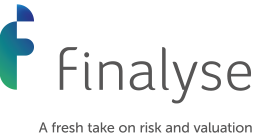How Finalyse can help
In 2027, FRTB will become the European norm for Pillar I market risk. Enhanced reporting requirements will also kick in at the start of the year. Are you on track?
Control your model risk with the right tool to develop and validate models, bridge the talent gap and reduce implementation risks
Written by Régis Deymié, Principal Consultant
Introduction
Capital requirements regulation (CRR) and directive (CRD), which are the European iterations of the Basel committee recommendations (Basel III) mainly concern large credit institutions and Banks but do not impact all investment firms with the same magnitude, some are even exempted.
With IFR / IFD (Investment Firms Regulation EU 2019/2033 and Investment Firms Directive EU 2019/2034) the European Commission and the Council wish to widen the scope of institutions impacted by Basel related prudential rules, by including all MIFID investment firms. This means that, while Banks and Insurers will mainly remain under CCR / CRD framework, other investment firms like asset managers or advisors will fall under the newly adopted IFR / IFD framework. Some exemptions are still maintained by the regulator as regards small and not interconnected institutions.
Investment Funds Managers regulated under AIFMD and UCITS Directive are only marginally impacted by IFR / IFD. According to article 60 and 61 of the IFD, the own funds of a management company (regulated under AIFMD or UCITS Directive) must at no time be less than one quarter of the fixed overheads of the preceding year. But AIFMD and UCITS Directive remain the primary reference in all common topics like remuneration, reporting or disclosures. However, it is still not clear what will be the obligations of the Firms falling under both AIFMD / UCITS Directive and MIFID).
The goal of this new regulatory piece is to evaluate specific risks incurred by MIFID Investment Firms like trading activity, large exposures, liquidity, leverage and provide a “level playing field” in terms of prudential framework comparable to that applicable in the banking sector, to the industry. The main prudential requirements are thus of the same kind as for Credit Institutions under CRR and CRD and include capital requirements, remuneration rules, reporting and disclosure obligations. That said, the legislator has confirmed his objective to consider the proportionality so that those requirements apply differently on the institutions depending on the category into which IFR is classifying them so that smaller and less systemic institutions face fewer and less stringent requirements then the large interconnected companies.
However, it is obvious that IFR / IFD will have a significant impact on several prudential aspects of most of the Investment Firms concerned. It will certainly lead to an increase of capital requirement, new remuneration policies and new reporting and disclosure obligations.
Even if we are still missing some important details that will be provided by the EBA through delegated acts over the coming months, we would advise all MIFID Investment Firms to proactively anticipate the possible impact on their institutions in order to be set at the time of the deadline which is quickly approaching.
Where do we stand and what is the time frame?
The Legislative Framework (IFR and IFD) has been adopted in October 2019 and published in the official Journal of the EU on the 5th December 2019. The Directive needs to be adopted by individual member states, but most of the provisions of the Regulation (IFR)m which is directly applicable, apply as of June 2021.
In order to move forward, the EBA, which has been mandated as well as ESMA by the European Commission, launched a consultation paper for several draft Regulatory Technical Standards and Implementing Technical Standard (Level 2 regulation meant to provide guidance on technical issues linked to IFR / IFD).
On 4 June EBA has delivered a roadmap for the implementation of the new regime and launched the consultation (with deadline as of 4 September), on the following 6 regulatory issues:
- Reclassification of certain Investment firms into credit institutions which will lead to submit them to CRR.
- Capital requirements calculation: calculation of certain thresholds, calculation of the overheads, method for measuring K-factors (please see below), definition of segregated account and a methodology of prudential consolidation of investment firms.
- Reporting and disclosure:
- A regulatory framework that considers the different categories of IFs (Investment Firms) in terms of business model, activity, size and interconnectedness.
- IFs will be required to regularly report on their own funds, level of minimum capital, concentration risk, liquidity, activity for certain IFs and certain thresholds.
- Disclosures of capital resources, capital requirements, remuneration policy and governance standards (article 46 to 53 of IFR).
- Standardized reporting that takes into account proportionality among IFs and the already existing reporting requirements (CRR, AIFMD ...)
- Remuneration and Governance: Develop a comprehensive framework that will provide a level playing field for European IFs while keeping the proportionality as a rule to ensure that implementation costs are limited. It is also to be noted that EBA will ensure consistency between IFD, CRD and AIFMD.
- Supervisory convergence and the supervisory review process: IFR and IFD include the SREP (Supervisory Review and Evaluation Process) that is meant to build a “single rule book” for IFs/
- ESG Factors and ESG risks: EBA objective is to deliver guidance on common definitions, risk management tools, prudential treatment, and disclosures. This will be done in conjunction with CRR / CRD work on the same issue, and the timeline will be aligned.
In terms of Timeline EBA plans to implement the different aspects of the regulation framework in 4 phases:
Phase 1 Dec 2020 Thresholds definition / criteria for IFs subject to CRR / Capital requirements / Disclosures / remuneration 1 |
Phase 2 Jun 2021 Liquidity requirements / internal governance / remuneration 2 / SREP 1 |
Phase 3 Dec 2021 Remuneration completed / ESG Factors and risks 1 |
Phase 4 2022 to 2025 SREP final / ESG Factors and risk final |
What is the classification of the different investment firms?
IFs considered as SNIFs (Small and Non-Interconnected Investment Firms) will be subject to only a partial application of IFR / IFD
Considering that in order to qualify as a SNIF the IF needs to satisfy all of the following requirements, it is to be anticipated that a majority of IFs won’t be eligible to such a regime:
- Assets under Management (AUM) under 1.2 billion.
- Client orders Handled (COH please see art 20 of IFR) less than 100 million per day for non-derivative transactions or 1 billion in case of derivative transactions.
- Assets safeguarded and administered (ASA please see art 19 of IFR) must be 0.
- Client Money Held (CMH please see art 18 of IFR) must be 0.
- Daily Trading Flow (DTF please see art 33 of IFR) must be 0.
- Net Position Risk (NPR please see art 22 of IFR) must be 0.
- Clearing Margin given (CMG please see art 23 of IFR) must be 0.
- Trading Counterparty Default (TCD please see art 26 of IFR) must be 0.
- Total Balance sheet in addition with off-Balance sheet should be less than EUR 100 Million.
- Average total growth revenue should be less than EUR 30 Million.
You will find a definition of each of these notions in Article 4 of the IFR that includes all definitions. Please also see below in K-factor section.
IFs considered as Credit institutions
IFR provides that certain IFs (systematic Investment Firms or Investment Firms being exposed to the same type of risks than Credit Institutions) should be treated as Credit Institutions and though subject to full CRD / CRR regulation.
IFs that do not belong to any of the 2 categories above
All other IFs will be subject to Full IFR / IFD regulation. This means to us that most of MIFID Investment firms will fall into this category due to the fact that they might not meet all SNIF criteria or because they belong to a group to which the need to consolidate their figures.
Capital Requirement, The K-Factor
Among the other requirements that will apply to IFs (new Governance structure, new remuneration policy, new reporting, new disclosures) the one on capital requirements is certainly the most stressful for business players.
Subject to precisions brought from the consultation with the industry, the principle provided in the IFR is as follow:
Own funds will always have to be at least equal to the highest of:
- One quarter of the firm's fixed overheads (salaries, expenses …)
- Permanent minimum capital requirements (Article 9 of IFD):
- EUR 750.000 for IFs having certain activities exposing them to specific risks like dealing on own account, portfolio management, investment advice or underwriting of financial instruments.
- EUR 75.000 or 150.000 depending on a certain type of activity (see Article 9 point 2 and 3 of IFD)
- The K-Factor requirement.
The K-Factor represents at least the sum of 3 main risk components that are Risk to Client (RtC), Risk to Market (RtM) and risk to Firms (RtF). That is to say that each of these components is the addition of specific K-factors (please see below table and bullet point) that are then summed to provide the final K-factor requirement.
Here are the K-factors that entail a coefficient by which the underlying amount should be multiplied for their computation (Article 15 (2) IFR). The others have different calculation methodologies referred below:
K-Factors | Coefficient | |
Assets under management under both discretionary portfolio management and nondiscretionary advisory arrangements of an ongoing nature | K-AUM | 0.02% |
Client monetary held | K-CMH (on segregated accounts) | 0.4% |
K-CMH (on non-segregated accounts) | 0.5% | |
Assets safeguarded and administered | A-ASA | 0.04% |
Client orders handled
| K-COH cash trades | 0.1% |
K-COH derivatives | 0.01% | |
RtC = K-AUM + K-CMH + K-ASA + K-COH RtM is either equal to K-NPR (Net Position Risk) or K-CMG (Clearing Margin Given).
Where K-NPR calculation shall be computed according to 3 possible methods (Article 22 of IFR) retrieving the exposition of the IF,
and K-CMG is linked to margin paid by the IF in its collateral management activity.
RtF = K-TCD + K-DTF + K-CON
Where K-CON (Concentration risk) is linked to exposures which exceed certain IFR thresholds (Article 39 of IFR),
And K-TCD (Trading Counterparty default) is calculated as follows (Article 26 of IFR):
For the purpose of calculating K-TCD, the own funds requirement shall be determined by the following formula:
Own funds requirement: α ⋅ EV ⋅RF ⋅CVA
Where
α = 1,2
EV= the exposure value calculated in accordance with Article 27
RF = the risk factor defined per counterparty type as set out in Green Table.
CVA = the credit valuation adjustment calculated in accordance with Article 32.
Counterparty type | Risk factor |
Central governments, central banks and public sector entities | 1.6% |
Credit institutions and investment firms | 1.6% |
Other counterparties | 8% |
Conclusion
IFR and IFD have clearly been drafted to fil a gap in terms of prudential and governance regulation framework. The former situation presented a regulatory gap between Credit Institutions that are subject to CRR / CRD IV, Investment funds that are subject to AIFM and UCITS (these regulations also provide a framework in terms of governance, risk management, remuneration, reporting and disclosure) for MIFID Investment Firms that were subject to none of these requirements until now.
The fact, the fact that EBA and ESMA want to leverage on the existing regulations shows the objective to build a common “level playing field” for all actors of the financial industry in Europe, while considering the specificities of each category in terms of size and business model.
The gap is now filled completely! The question I am sure all actors have in mind is how far EBA and ESMA are ready to go to consider the “implementation burden” for institutions! We might have a beginning of answer on the 4 September 2020.
Finalyse InsuranceFinalyse offers specialized consulting for insurance and pension sectors, focusing on risk management, actuarial modeling, and regulatory compliance. Their services include Solvency II support, IFRS 17 implementation, and climate risk assessments, ensuring robust frameworks and regulatory alignment for institutions. |

Our Insurance Services
Check out Finalyse Insurance services list that could help your business.
Our Insurance Leaders
Get to know the people behind our services, feel free to ask them any questions.
Client Cases
Read Finalyse client cases regarding our insurance service offer.
Insurance blog articles
Read Finalyse blog articles regarding our insurance service offer.
Trending Services
BMA Regulations
Designed to meet regulatory and strategic requirements of the Actuarial and Risk department
Solvency II
Designed to meet regulatory and strategic requirements of the Actuarial and Risk department.
Outsourced Function Services
Designed to provide cost-efficient and independent assurance to insurance and reinsurance undertakings
Finalyse BankingFinalyse leverages 35+ years of banking expertise to guide you through regulatory challenges with tailored risk solutions. |

Trending Services
AI Fairness Assessment
Designed to help your Risk Management (Validation/AI Team) department in complying with EU AI Act regulatory requirements
CRR3 Validation Toolkit
A tool for banks to validate the implementation of RWA calculations and be better prepared for CRR3 in 2025
FRTB
In 2025, FRTB will become the European norm for Pillar I market risk. Enhanced reporting requirements will also kick in at the start of the year. Are you on track?
Finalyse ValuationValuing complex products is both costly and demanding, requiring quality data, advanced models, and expert support. Finalyse Valuation Services are tailored to client needs, ensuring transparency and ongoing collaboration. Our experts analyse and reconcile counterparty prices to explain and document any differences. |

Trending Services
Independent valuation of OTC and structured products
Helping clients to reconcile price disputes
Value at Risk (VaR) Calculation Service
Save time reviewing the reports instead of producing them yourself
EMIR and SFTR Reporting Services
Helping institutions to cope with reporting-related requirements
Finalyse PublicationsDiscover Finalyse writings, written for you by our experienced consultants, read whitepapers, our RegBrief and blog articles to stay ahead of the trends in the Banking, Insurance and Managed Services world |

Blog
Finalyse’s take on risk-mitigation techniques and the regulatory requirements that they address
Regulatory Brief
A regularly updated catalogue of key financial policy changes, focusing on risk management, reporting, governance, accounting, and trading
Materials
Read Finalyse whitepapers and research materials on trending subjects
Latest Blog Articles
Contents of a Recovery Plan: What European Insurers Can Learn From the Irish Experience (Part 2 of 2)
Contents of a Recovery Plan: What European Insurers Can Learn From the Irish Experience (Part 1 of 2)
Rethinking 'Risk-Free': Managing the Hidden Risks in Long- and Short-Term Insurance Liabilities
About FinalyseOur aim is to support our clients incorporating changes and innovations in valuation, risk and compliance. We share the ambition to contribute to a sustainable and resilient financial system. Facing these extraordinary challenges is what drives us every day. |

Finalyse CareersUnlock your potential with Finalyse: as risk management pioneers with over 35 years of experience, we provide advisory services and empower clients in making informed decisions. Our mission is to support them in adapting to changes and innovations, contributing to a sustainable and resilient financial system. |

Our Team
Get to know our diverse and multicultural teams, committed to bring new ideas
Why Finalyse
We combine growing fintech expertise, ownership, and a passion for tailored solutions to make a real impact
Career Path
Discover our three business lines and the expert teams delivering smart, reliable support


